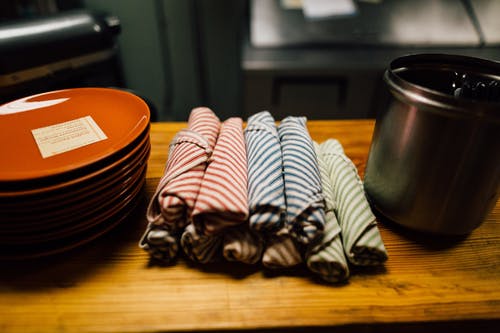Do It Yourself: Reusable Hot Water Bottles
Hot water bottles are great because they help ease neck pain, back pain and muscle aches. Generally, they reduce stiffness on muscles and joints.
There are a variety of types across the market. Prices vary from the very basic PVC budget options to Sri Lankan rubber, cashmere cover beauties.
Indeed, sometimes you may a want cheaper alternative to keep yourself warm. That quick fix to apply heat to a painful area. There may come a time when you don’t have your extra long hot water bottle at hand, but need its warming impact in an emergency!
OK, emergency might be a bit strong, but when you become used to a hot water bottle it can be difficult to get by when it is not around.
Many stores sell such hot water bottles or heating pads, but it’s actually easy to make a stop-gap alternative at home.
Option # 1: ‘The Microwaved Wet Dishcloth’
One way is using a wet dishcloth, as suggested by a user from Reddit. Soak a wet dishcloth in warm water. Then, place the warm dishcloth in a microwave-safe freezer bag. Heat it in a microwave for 45 to 60 seconds intervals until it is steaming hot.
As the author of that Reddit thread revealed: “I am told that hot water bottles are good for menstrual cramps. This takes about 5 minutes to get ready and works pretty well if you don’t have an actual hot water bottle around.”
After microwaving, wrap the dishcloth in a towel and apply it to the affected area for 15 to 20 minutes at a time. You can also put the dishcloth first in a zip lock bag before wrapping it in a towel.
Warning! Always approach any hot water or heat-based treatment with extreme caution. That’s why we are always so insistent on promoting our safety guides at every possible opportunity.
We want you warm and safe, not….you guessed it…injured.

Option # 2: ‘Oven-Heated Towel’
There is also a way to make a handmade hot water bottle by putting a damp, folded towel in an oven. Set the oven’s temperature to 300°F (149°C) and leave the towel in for 5 to 10 minutes. You can leave it on longer, but don’t burn it.
Happiness is a warm bath and a soft towel
World of Wall Art
However, the timing will depend on the thickness of the towel.
When it is warm enough, you can now wrap the towel in a thinner, dry piece of cloth, and use it as a heating pad.
Option # 3: ‘Recycled Socks’
Reusable heating pads can also be created out of fabric or old socks. To make this, fill a clean cotton sock (old or not) with a cup of either uncooked rice, dried lentils, salt, or dried beans.
Don’t pack the grains or lentils too tightly, and allow some room so it can easily move to the area to be treated. Once done, tie the end of the sock with a piece of string.
You can also tie the end of the sock instead, to keep the grains from spilling out.
Heat the filled sock in the microwave for about 45 to 60 seconds or longer, depending on your microwave.
Once heated, you can now apply the heated sock to the affected area. To use it as a cooling pad, just place it in the freezer for five minutes.

Option # 4: ‘Bean bags’
Using beans or grain-filled heat bags is an environmentally-friendly alternative to hot water bottles. These can be used as hot water bottle alternatives by heating them in a microwave for no longer than 45 to 60 second intervals, or until you’re happy with the temperature.
These can be reused multiple times and can be stitched up again if they have a hole or one of the seams has blown. Like recycled socks, these can be used as cold compresses by freezing.

Option # 5: ‘Metal or Plastic Bottles’
For campers, it is hard to always bring excess baggage. In this case, you can use a metal or plastic bottle instead of a hot water bottle.
Just fill it with warm or hot water and wrap it in a sock or towel and you can now place it on the affected body part.
It’s not advisable to fill plastic bottles, or even actual hot water bottles, with boiling water. Why not you may ask….
Because they can melt and break down instead of working as an alternative to hot water bottles.
Heat = good.
Damaged plastic = not good.
They can be safe to use as long as they are filled with warm or hot water, and wrapped in towels or cloths before applying.
These homemade alternatives, unlike hot water bottles, may not stay hot for a long time. Hot water bottles will be more useful if you’re looking for a heater that can be used overnight. This is because all of our hot water bottles are made of rubber, which retains hot water for a long time.
These alternatives can help and work pretty well if you are in a pinch or don’t have an actual hot water bottle.
Should I make my own hot water bottle?
Unless you know what you are doing and feel confident then the answer is no. Actual hot water bottles are made by experienced professional using high-quality equipment.
If you are in a bind or need a quick fix then attempt the above options with caution. However, nothing beats your Cuddly Comforts extra long hot water bottle for safe, effective heat therapy.

